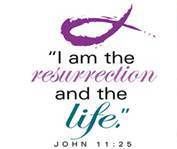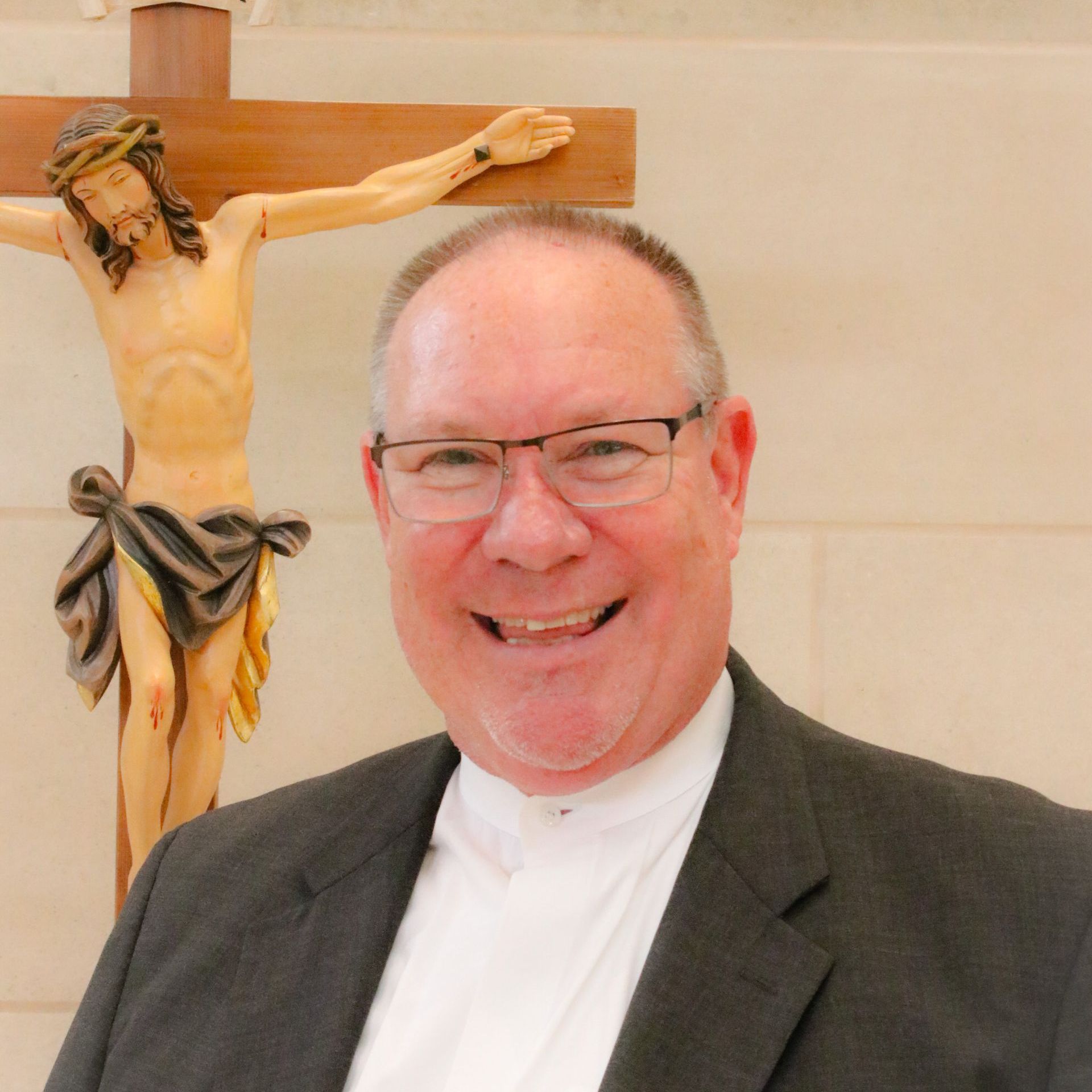Funerals
ORDER OF CHRISTIAN FUNERALS
From the General Introduction to the Order of Christian Funerals ...
Christians celebrate the funeral rites to offer worship, praise and thanksgiving to God for the gift of a life which has now been returned to God, the author of life and the hope of the just. The Mass, the memorial of Christ's death and resurrection, is the principal celebration of the Christian Funeral.
The Church through its funeral rites commends the dead to God's merciful love and pleads for the forgiveness of their sins. At the funeral rites, especially at the celebration of the eucharistic sacrifice, the Christian community affirms and expresses the union of the Church on earth with the Church in heaven in the one great communion of saints.
The celebration of the Christian funeral brings hope and consolation to the living. While proclaiming the Gospel of Jesus Christ and witnessing to Christian hope in the resurrection, the funeral rites also recall to all who take part in them God's mercy and judgment adn meet the human need to turn always to God in times of crisis.
Our Worship Department is ready to assist any family in preparing the funeral rites of their deceased loved one. To schedule a meeting, call the office at 281-370-3401 and ask for Deacon Scott Glueck. If you are calling after regular office hours, follow the prompts given on the recording and an operator will assist you immediately.

Eternal rest grant unto them, O Lord.
And let perpetual light shine upon them.
May the souls of all the faithful departed rest in peace. AMEN.
Cremation
Click hereThe Vatican’s Congregation for the Doctrine of the Faith recently published a new instruction on the burial of the dead and on the conservation of the ashes in cases of cremation.
The instruction reiterates the long held view that the Church is not opposed to the practice of cremation, though it continues to recommend that the bodies of the deceased be buried in cemeteries or other sacred places.
However the new document insists that ashes should not be kept in private houses and that the scattering of ashes on land or at sea is not permitted.
Please click button below for the full English text of Instruction, Ad resurgendum cum Christo, regarding the burial of the deceased and the conservation of the ashes in the case of cremation.
Roman Catholic Funeral Rites
Major Funeral Rites of the Catholic Church
I. Vigil for the Deceased (Wake)
The vigil for the deceased is the official prayer of the church for the deceased and the first of the three major rites celebrated by the Christian community. The vigil service is never omitted.
When: The vigil is celebrated between the times of death and the funeral liturgy, often on the day before or evening before the funeral mass.
Where: The vigil may take place in the home of the deceased, at the funeral home, or in the church.
Minister: A priest, deacon, or layperson may preside at this liturgy.
Content: The vigil takes the form of the liturgy of the word. It centers on readings from the sacred Scripture, songs, psalms, and intercessory prayer. A brief homily/reflection by the presider is also included. The vigil service is the preferred time for the family and friends to offer stories, reflections, and eulogies on the life of the deceased. Devotional prayers, such as the rosary, may not replace the vigil service.
II. Funeral Mass
The funeral Mass is the central liturgical celebration for the deceased.
The Christian community reaffirms in sign and symbol, word and gesture that through baptism we share in Christ's death and resurrection, and look forward to the day when we will be raised up and united in the kingdom of light and peace.
When: The funeral Mass is normally celebrated the evening before, or on the day of burial/committal. Where: The funeral Mass takes place in the parish church.
Minister: A priest is the presider for a funeral Mass.
Content: The funeral Mass begins at the entrance of the church. The priest and the gathered assembly receive the body of the deceased. The coffin is sprinkled with holy water and the pall is placed upon it by family or friends of the deceased to recall the deceased's baptism. The body is carried in procession toward the altar and placed near the paschal candle. When the coffin is in place, other Christian symbols, such as the Book of Gospels or cross may be placed on the coffin.
Mass continues as the community celebrates the Liturgy of the Word. The homily is based on the readings and focuses on the paschal mystery and God's love. The assembly prays for the deceased and the bereaved in the intercessions. The Liturgy of the Eucharist is celebrated as usual. In word and sacrament, we celebrate Christ's death and resurrection and reaffirm our share in this mystery. The final commendation immediately follows the prayer after Communion. At this time the deceased is entrusted to God's tender care. While an extended time of remembrance is most appropriate for the vigil, if desired, one family member or friend may offer a brief prepared eulogy before the final commendation begins. The song of farewell is the climax of the rite of final commendation. This song, sung by the assembly, has a specific function: to affirm hope and trust in the paschal mystery. The body may be incensed during or following the song of farewell. The prayer of commendation concludes the rite.
The procession is formed and the body is carried to the place of burial/committal.
Music for Funeral Mass: Music selections for funerals are made in conjunction with the ministers of music in the parish and follow the directives of the Roman Catholic Church regarding music in the liturgy. Some requested music selections that do not fall within these norms may be appropriate during the period of the wake.
III. Burial/Committal
The funeral rites conclude with the rite of committal.
When: The burial/committal takes place as soon as possible after the funeral Mass.
Where: The rite of committal takes place beside the open grave or place of interment. If this is not possible, it may take place at a cemetery chapel. Minister: A priest, deacon, or lay person may preside at this service.
Content: Though brief, the rite of committal assists the bereaved at this most difficult time. This rite includes a short Scriptural verse, the prayer of committal, intercessions, Lord's Prayer and a blessing. The lowering of the body into the grave or placement in the tomb or crematorium may take place following the prayer of committal or at the conclusion of the rite. A song affirming hope in the resurrection may conclude this rite. Those who wish may offer some gesture of leave-taking at this time.
Funerals for non-Catholics
"In the prudent judgment of the local ordinary, ecclesiastical funerals can be granted to baptized persons who are enrolled in a non-Catholic Church or ecclesial community unless their intention is evidently to the contrary and provided that their own minister is not available" (canon 1183.3).
Related Optional Rites
Though secondary, these rites are helpful in accompanying the mourners at times of transition and through the various stages of facing the reality of death.
Prayers after Death
This rite is a model of prayer, which may be used in whole, in part, or adapted for particular circumstances. It consists of a brief reading, the Lord's Prayer and some concluding prayers. This rite may be used when the pastoral minister (i.e. priest, deacon, or layperson) first meets with the family following the death.
Gathering in the Presence of the Body
As the family gathers in the presence of the body for the first time, the pastoral minister is present to offer prayer and support. This rite consists of a short passage from Scripture, a psalm, sprinkling with holy water, and the Lord's Prayer.
Transfer of the Body to the Church or to the Place of Committal
This rite supports the family and friends as they prepare to take the body to the church or place of committal. It consists of a brief Scripture verse, litany, the Lord's Prayer and a concluding prayer lead by the pastoral minister.
Cremation
The Catholic Church permits cremations unless it is evident that cremation was chosen for anti- Christian motives. When cremation is chosen one of the following options is used.
Cremation after the funeral liturgy
Even when cremation is chosen, the Church recommends that the body of the deceased be present for the funeral rite. The presence of the human body better expresses the values that the Church affirms in the funeral rites. When cremation follows the liturgy, the funeral liturgy and other rites are celebrated as described above.
Funeral liturgy in the presence of the cremated remains
The Holy See authorized the bishops of the United States to allow the celebration of a funeral liturgy in the presence of the cremated remains of the body. The cremated remains of the body are to be treated with the same respect given to the human body. Prior to the funeral Mass or as a part if the entrance procession of the Mass, a worthy vessel, containing the cremated remains, is carried with reverence into the church. The cremated remains are placed on a suitable stand or table in the place normally occupied by the coffin. The funeral Mass begins with the sprinkling of holy water; however, a pall is not placed over the cremated remains. The funeral mass is celebrated as described above. Following the prayer after Communion, the rite of final commendation takes place as usual.
Cremation and committal prior to the funeral liturgy
When the body is cremated and committed soon after death, the rites of final commendation and committal are used at the appropriate times, even though occurring prior to the funeral liturgy. The vigil and other rites are also adapted, as necessary.
Folrgylowing the committal, the family and friends of the deceased join the community in celebrating the funeral liturgy. AFTER Communion, the blessing is given and the people are dismissed.
The cremated remains of the body, due the same respect as the remains of the body, must be buried in a cemetery, entombed in a columbarium, or buried at sea.
Cemetery
Burial takes place in a special area set aside for the resting place of the deceased. Aside from the legal restrictions for burial, a Catholic may choose the site of burial.
Catholic Cemetery
A Catholic cemetery is a sacred place that is set aside by the local church’s bishop. A Catholic cemetery is the resting place for those who are baptized, who worshipped and lived their Christian faith, and in death complete their baptismal commitment at rest with their fellow companions in faith. However, it is not a requirement to be Catholic to be buried in a Catholic cemetery.
Non- Denominational Cemetery
Within the norms for Catholic burial a Catholic may choose to be buried in a cemetery other than a Catholic one. The rite of committal includes a ritual for blessing the place of burial if it has not been previously blessed.
Funeral Planning
The following are "tools" to assist you in planning a funeral here at St. Ignatius Loyola. The Worship Department stands ready to assist you in all matters. We invite you to work closely with our Worship Department before setting a time or date for the funeral. This will assure that our worship space is available and the all the necessary ministers are available for the funeral services. Click on any of the following to begin the process. If you need any assistance, please call our offices at 281-370-3401 and ask for Deacon Scott Glueck or Karla Jackson. For music needs or questions, please ask for Connie Wilson, Director of Music.
FUNERAL INFORMATION FORM TEMPLATE
ARCHDIOCESE OF GALVESTON-HOUSTON FUNERAL & CREMATION GUIDELINES
Contact Us

Deacon Scott Glueck
Permanent Deacon / Coordinator of Ethnic Ministries / Funeral Coordinator



